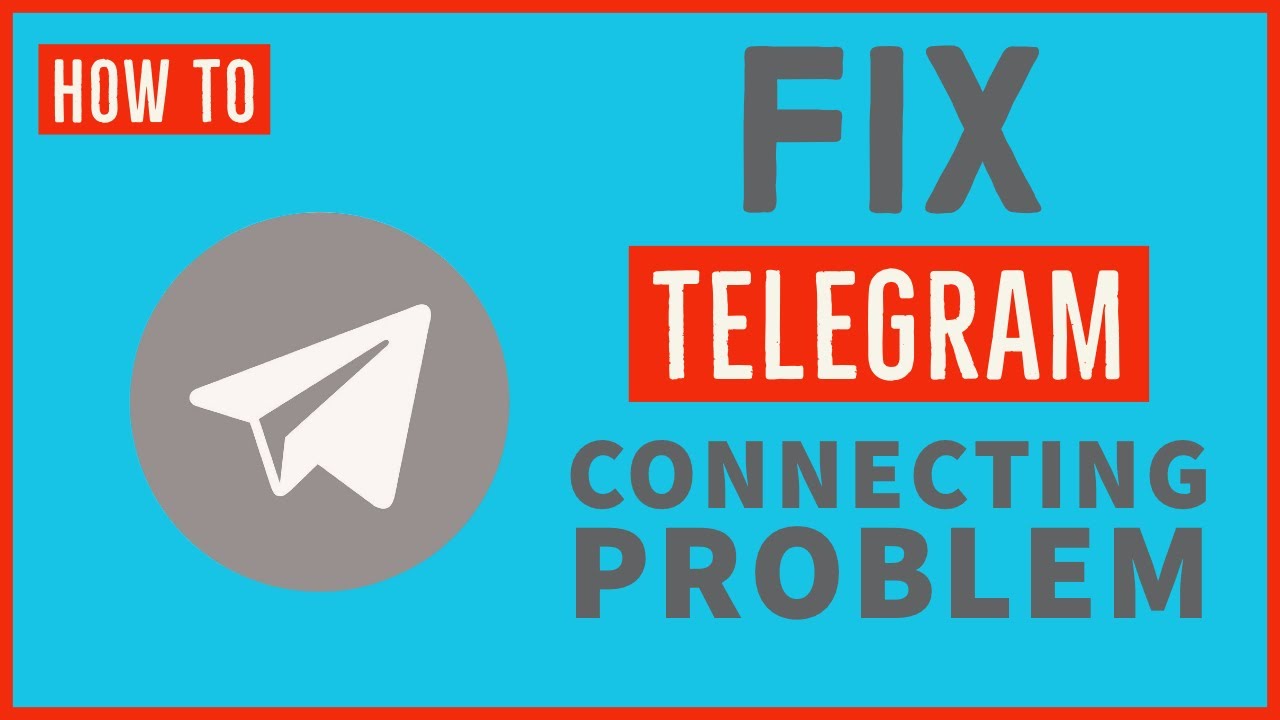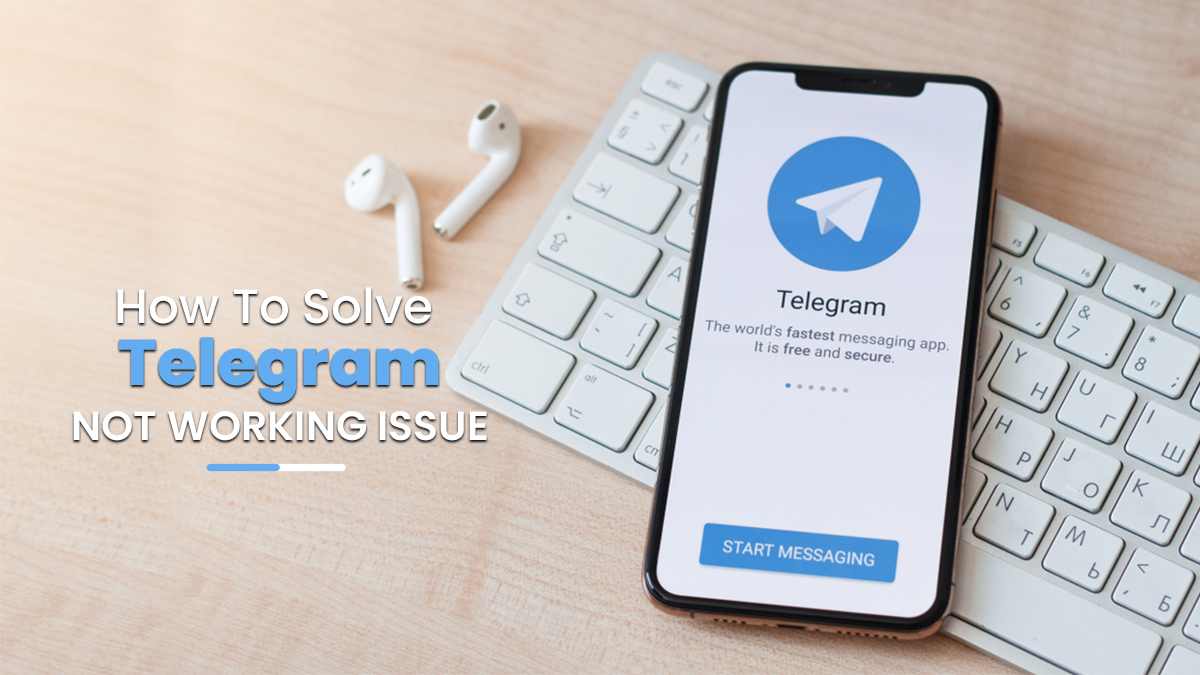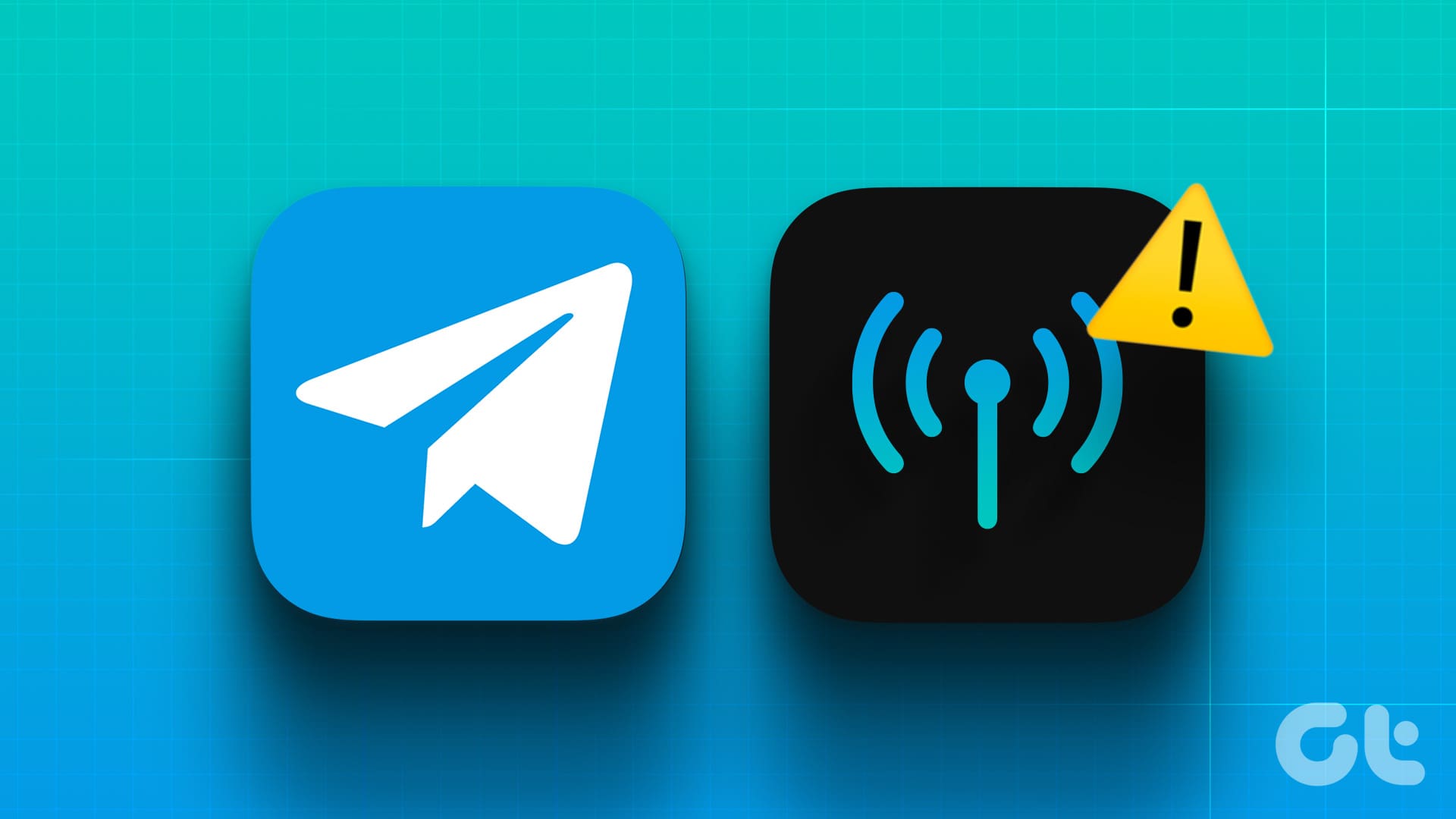Welcome to our guide on troubleshooting common issues with Telegram! If you’ve ever found yourself frustrated by the app not working as it should, you’re not alone. Many users encounter hiccups now and then, whether it’s connectivity problems, features not functioning, or trouble with notifications. In this post, we’ll delve into the most frequent issues and equip you with the knowledge to get your Telegram chatting smoothly again. Let’s get started!
Understanding Telegram Functionality

Telegram is more than just a messaging app; it's a powerful platform that integrates numerous features designed for seamless communication and usability. Before we dive into troubleshooting, understanding how Telegram works can help you identify where the issues may be stemming from. Here's a closer look at its key functionalities:
1. Cloud-Based Messaging: Telegram stores messages, photos, and videos on the cloud, meaning you can access your data from any device without losing your chat history. This feature is essential for users who switch devices frequently or want to maintain continuity in conversations.
2. End-to-End Encryption: For those who prioritize privacy, Telegram offers Secret Chats that use end-to-end encryption. This means that only you and the recipient can read the messages. However, it’s important to remember that standard chats do not have this level of security. If you're having issues, check if you are using the right type of chat.
3. Self-Destructing Messages: In Secret Chats, you can send self-destructing messages, where content vanishes after a specified time. While a fun feature, it can lead to misunderstandings if you're not aware that messages will disappear.
4. Bots and Channels: Telegram is well-known for its bots that automate tasks and channels that allow broadcasting to an unlimited audience. Sometimes, users face issues with bot functionalities or notifications from channels, often due to settings being misconfigured.
5. User Interface: Telegram's interface is user-friendly, but sometimes settings can be hidden beneath various menus. Users may find themselves unsure of how to turn on notifications, change privacy settings, or manage their chat lists, which can sometimes lead to the impression that Telegram isn’t working properly.
6. Multi-Platform Support: Another strong point for Telegram is its ability to function across multiple platforms. You can use it on smartphones, tablets, and desktops without losing any messaging capabilities. However, syncing issues may occur, particularly if you're logged in on multiple devices.
With this foundational understanding of Telegram’s functionality, you’ll be better equipped to troubleshoot any issues that arise. Whether it’s a message that won’t send, an unexpected log-out, or problems with notifications, knowing how the app is designed to operate is half the battle.
Stay tuned as we dive deeper into specific troubleshooting methods you can apply to resolve these common Telegram issues!
Also Read This: How to Turn Off the Self-Destruct Timer in Telegram Chats
3. Common Reasons Telegram Might Not Work

If you're experiencing problems with Telegram, you're not alone! Many users encounter issues from time to time. Here are some common reasons why your Telegram app might not be functioning properly:
- Server Issues: Sometimes, Telegram servers may be down or experiencing heavy traffic. This often causes connectivity problems for users. You can check if others are experiencing similar issues by visiting status websites like DownDetector.
- Outdated App Version: If you haven't updated your Telegram app in a while, this could lead to compatibility issues. Always make sure you have the latest version to benefit from the latest features and bugs fixes.
- Incorrect Settings: Certain settings within the app may also hinder its functionality. For instance, being in "Privacy mode" can restrict your access to certain features.
- Device-Specific Issues: Sometimes, the problem lies within your device rather than the app itself. This could be due to lack of storage space, RAM issues, or outdated operating systems.
- Blocked Account: If you've been reported for violating Telegram's community guidelines, your account might get suspended or blocked. If you suspect this could be the case, reach out to Telegram support for clarity.
Identifying the cause of the problem is the first step toward troubleshooting it efficiently. Make sure to run through these potential issues before diving deeper into more complex troubleshooting steps!
Also Read This: How to Clear the Cache on Telegram: Free Up Space and Improve Performance
4. Network Connectivity Issues

One of the most common issues that can prevent Telegram from working smoothly is related to network connectivity. Here are some key factors to consider:
- Wi-Fi or Mobile Data Problems: If Telegram is not connecting, the first thing you should check is your internet connection. Try switching between Wi-Fi and mobile data to see if the issue persists.
- Router Settings: Sometimes, router settings may block certain apps or functionalities. If you’re using Telegram on Wi-Fi, try restarting your router or checking the settings related to Quality of Service (QoS).
- Firewall or Security Software: If you have a firewall or antivirus software on your device, it might be blocking Telegram's access to the internet. Temporarily disable the software to see if it resolves the issue.
- VPN Services: Using a VPN can create connection issues with Telegram, especially if the VPN server is slow or not functioning properly. Try disconnecting your VPN and see if Telegram works without it.
- Network Congestion: Sometimes, you're simply in a crowded network with lots of users connected. This can slow down your connection speeds and cause issues with apps like Telegram. You may need to wait until network usage decreases.
Always remember that network connectivity is crucial for apps that rely on real-time data exchange, like Telegram. Keep these points in mind and troubleshoot accordingly, as resolving network issues can often lead to a quick fix for your Telegram woes!
Also Read This: How to Protect Your Telegram Account from Hacking
5. App Updates and Compatibility
When it comes to messaging apps like Telegram, keeping your application updated can make a significant difference in your overall experience. Often, users encounter bugs, slow performance, or even crashes due to outdated versions of the app. So, let’s dive into why updates are crucial and how compatibility issues can impact your use of Telegram.
Why You Should Keep Telegram Updated: Every app goes through constant changes and updates to improve functionality and security. The Telegram development team periodically releases new features, bug fixes, and performance improvements. If you’re not using the latest version:
- You might miss out on important features that enhance usability.
- Your chats may not sync properly across devices.
- You could expose your device to security vulnerabilities.
To check for updates, simply go to your device's app store, whether it’s the Google Play Store for Android or the App Store for iOS. You’ll want to look for updates under the “My Apps” or “Updates” section. And remember, enabling automatic updates can save you from future hassles!
Compatibility Issues: Another common source of trouble is compatibility between the Telegram app and your device’s operating system. Regularly, new OS versions are released that may not yet be fully optimized for all apps, including Telegram. Here are a few things to keep in mind:
- Check the system requirements for Telegram to ensure your device is supported.
- If you’re using an older device or OS version, consider upgrading your device or updating your OS.
- Sometimes, skipping several updates at once can create compatibility issues, so update regularly!
In summary, keeping your Telegram app updated and ensuring compatibility with your operating system are essential steps in preventing and troubleshooting potential issues. So, take a moment now to check your app’s version, and if it’s not the latest, hit that update button!
Also Read This: How to See Who Someone is Talking to on Telegram: Is It Possible?
6. Server Issues Affecting Telegram
We often forget that apps like Telegram rely on robust server infrastructure to function correctly. Occasionally, those servers can experience downtime or technical glitches, affecting your ability to send or receive messages, access multimedia, or log into your account. Here’s what you need to know about server issues and how to identify them.
This is What Server Issues Might Look Like:
- Your messages aren’t sending, and you see a spinning wheel or a gray check instead of a blue check.
- Your contacts appear offline when you know they’re online.
- You encounter delays when trying to connect, download files, or access groups.
- Telegram might give you an error message like “Unable to connect to the server.”
Identifying Server Problems: If you suspect that server issues are behind your Telegram troubles, here are some steps to verify:
- Check Online Status: Visit websites like DownDetector to see if others are experiencing similar issues.
- Social Media Feeds: Check Telegram's official channels on Twitter or Telegram’s blog for any announcements regarding server disruptions.
- Community Forums: Explore Telegram communities or forums for any ongoing discussions about server outages.
Finally, if you confirm that there’s a server issue, the best course of action is usually to wait it out. These problems are often resolved quickly by the technical team. In the meantime, you might want to try alternative messaging apps for urgent communications.
If you constantly face server-related issues, consider reaching out to Telegram's support team for more detailed assistance. Understanding the interplay between app issues and server reliability can help you navigate your Telegram experience more effectively.
Also Read This: How Accurate is the Telegram Last Seen Feature?
7. Device-Specific Problems
Sometimes, the issues you're facing with Telegram may not be due to the app itself but rather related to your specific device. Whether you're using a smartphone, tablet, or desktop, different devices can exhibit different problems. Let's look at a few common device-specific problems and how they can affect your Telegram experience:
Android Devices:
- Insufficient Storage: If your device is low on storage, Telegram may not function properly. This app requires space for cache files, media downloads, and updates.
- Older Operating System: Running an outdated version of Android can lead to compatibility issues. Always ensure your device is running the latest version for optimal app performance.
- Background Restrictions: Check if you have restricted Telegram's background data. This can prevent the app from sending or receiving messages when you're not actively using it.
iOS Devices:
- Battery Optimization: iOS has aggressive battery management settings that can impact how apps function in the background. Ensure that Telegram is allowed to refresh in the background.
- App Updates: Just like with Android, running an older version of iOS can cause issues with Telegram. Make sure you’re always running the latest version available.
Desktop Applications:
- Operating System Compatibility: Ensure that your desktop operating system is compatible with the latest version of Telegram. Outdated systems may lead to crashes or failure to launch.
- Firewall and Security Software: Sometimes, your firewall settings or anti-virus software may block Telegram's access to the internet. Check your security settings to ensure Telegram is whitelisted.
General Tips:
- Restart your device. A simple reboot can often resolve many connectivity and performance issues.
- Update your device's operating system and any relevant software packages.
- Clear the app's cache to resolve minor glitches.
By understanding the quirks and restrictions of your specific device, you can better diagnose issues and enhance your Telegram experience.
Also Read This: How to Know If Your Telegram Account Has Been Deleted
8. How to Fix Common Telegram Issues
Encountering issues with Telegram is something we all face from time to time, but thankfully, most problems have straightforward fixes. Here’s a handy guide to troubleshoot and fix some of the most common issues:
1. Cannot Send or Receive Messages:
- Check your internet connection. This might sound basic, but ensuring Wi-Fi or mobile data is active can solve the problem.
- Restart the app. Sometimes a quick restart can refresh the application and restore functionality.
- Update Telegram. Ensure you have the latest version of the app installed to avoid bugs.
2. Stuck on Loading:
- Check for any server issues by visiting Telegram’s official Twitter or status page.
- Clear your app cache. In the settings under Storage, you’ll find the option to clear cache – this can often help with loading problems.
3. Not Receiving Notifications:
- Ensure notifications are enabled in your device settings and inside the Telegram app settings.
- Check if you are muted in the specific chats where you’re not receiving notifications.
4. Can't Join Groups or Channels:
- Make sure the group or channel isn't full. Telegram has a limit (200,000 for channels and 200 for groups) and might prevent new members from joining.
- Check if you’ve been banned or removed from the group by requesting admin feedback.
5. App Crashes or Freezes:
- Delete and reinstall the app. This can help clear any corrupt files causing the app to crash.
- Ensure your device has enough RAM and processor capability to run the app efficiently.
If you've tried all these steps and still can't resolve the problems, it might be time to reach out to Telegram support or explore forums to see if others have found solutions to similar issues. Remember, tech glitches happen, but they can often be fixed with a bit of patience and troubleshooting!
Also Read This: How to Access Telegram Files: A Complete Guide to Finding and Managing Your Files
9. When to Contact Telegram Support
Sometimes, despite your best efforts, you might find that Telegram is still not functioning the way you’d like. In such cases, knowing when to reach out to Telegram Support can save you time and frustration. Here are some scenarios where contacting support may be your best option:
- Repeated Crashes or Freezes: If Telegram crashes or freezes consistently, you might have encountered a bug or compatibility issue. This may require an expert's insight.
- Login Issues: If you're having trouble logging in, especially if you've confirmed your phone number and received your activation code.
- Missing Messages or Contacts: If you've noticed that messages or contacts have mysteriously disappeared, this could indicate a syncing problem that may need attention from support.
- Feature Malfunction: If a particular feature, such as voice messages or file sharing, isn't working despite troubleshooting, it could be a technical issue.
- Account Security Concerns: If you believe your account has been hacked, or you’ve received suspicious activity notifications, don't hesitate to contact support for help.
- Payment Issues: If you're having trouble with paid features or subscriptions and can't find a resolution, it's best to reach out.
Before reaching out, make sure to gather relevant information such as your username, the device you’re using, and a clear description of the problem you’re facing. This will help the support team address your issue more efficiently.
To contact Telegram Support, simply go to the app, navigate to Settings > Ask a Question, and submit a detailed request. You can also visit their official support page for additional resources and options.
10. Conclusion
Having issues with Telegram can be frustrating, especially when you rely on it for communication. However, many of the most common problems can often be resolved with a bit of troubleshooting. Remember, most of the issues related to connectivity, notifications, or access can be traced back to your device settings, network conditions, or app compatibility.
As you've seen, some key troubleshooting steps include:
- Checking your internet connection
- Updating the app
- Adjusting phone settings
- Clearing cache data
- Reinstalling the app
It’s essential to be patient while experimenting with these fixes. Sometimes, a simple restart of your device can work wonders. If you’ve tried everything on your own and nothing seems to help, don’t hesitate to contact Telegram support. They are equipped to handle specific issues that might not be solvable through common troubleshooting.
Remember that the world of apps is continually evolving, and updates can introduce both new features and new challenges. Staying informed about the app’s latest versions and the official Telegram channels can help you avoid issues in the future. So, keep your app up-to-date and don’t hesitate to seek help when needed!
Ultimately, with proper troubleshooting techniques and understanding when to seek assistance, you can ensure that your Telegram experience is smooth and enjoyable. Happy chatting!
 admin
admin








